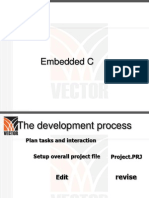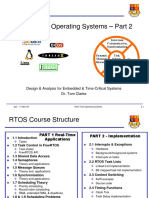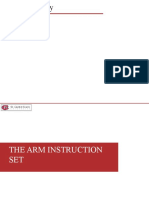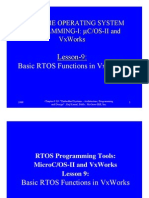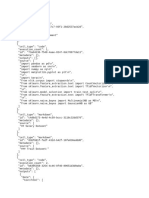100% found this document useful (2 votes)
389 views16 pagesEmbedded C Language Overview
Embedded C is a subset of C used for embedded systems that focuses on readability, reliability, and other qualities. It uses interrupts to allow an embedded system to respond to multiple devices asynchronously by pausing the main program flow to service interrupt requests. The compiler preprocessing, compilation, and linking processes translate embedded C code into an executable that allocates sections of memory and resolves symbols and references between object files.
Uploaded by
mahmoud mohamedCopyright
© © All Rights Reserved
We take content rights seriously. If you suspect this is your content, claim it here.
Available Formats
Download as PDF, TXT or read online on Scribd
100% found this document useful (2 votes)
389 views16 pagesEmbedded C Language Overview
Embedded C is a subset of C used for embedded systems that focuses on readability, reliability, and other qualities. It uses interrupts to allow an embedded system to respond to multiple devices asynchronously by pausing the main program flow to service interrupt requests. The compiler preprocessing, compilation, and linking processes translate embedded C code into an executable that allocates sections of memory and resolves symbols and references between object files.
Uploaded by
mahmoud mohamedCopyright
© © All Rights Reserved
We take content rights seriously. If you suspect this is your content, claim it here.
Available Formats
Download as PDF, TXT or read online on Scribd
/ 16





